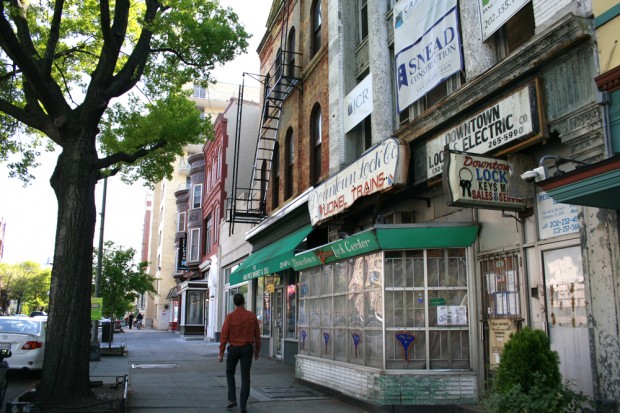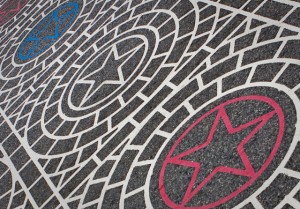
Elahe Izadi / DCentric
Downtown Lock Co. (center) has been on 14th Street since 1910. The building has been sold to make way for luxury condominiums along a street that's experiencing rapid redevelopment.
The evolution of 14th Street NW continues with regular announcements of new upscale restaurants and residences opening up along the corridor. But 14th Street wasn’t always the epicenter of fine dining in the District; in recent decades, it was more well-known as a place where drug dealers and prostitutes congregated.
A few older businesses still remain along the strip, but they’re starting to close shop, too. Take Downtown Lock Co. at 1345 14th St. NW, the building sold to make way for five, ultra-luxury condos.
“Back when we were there, the street had a lot of drugs, prostitution, a lot of drifters,” said Downtown Lock Co. co-owner Reuben Houchens. “You had to sort of establish yourself, first of all, that you weren’t afraid to be there. Of course we weren’t. [The way] we grew up, as we used to say, we knew the streets. And you had to basically hold your ground, as far as ‘we’re here and we will only tolerate so much.’ I’m talking about the pimps prostituting the girls, and drugs addicts and drug pushers — you had to be tough.”




